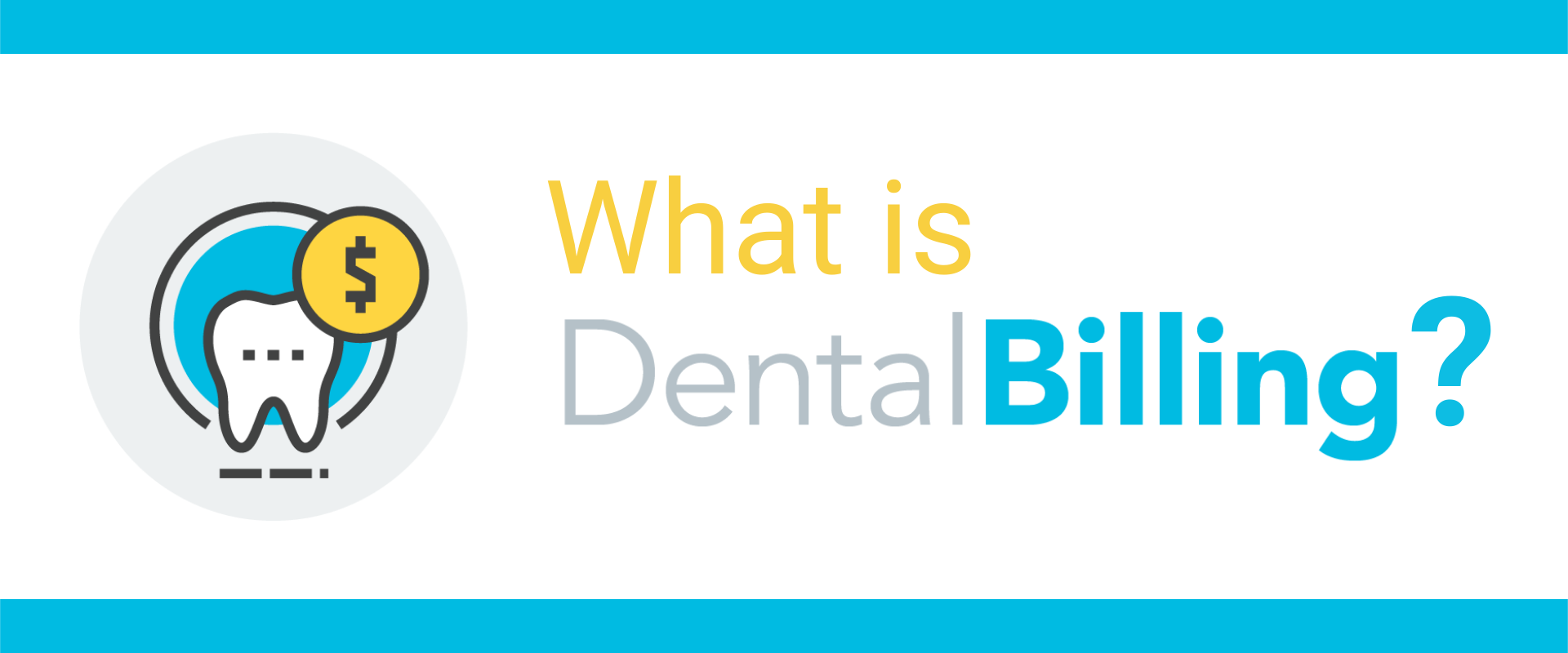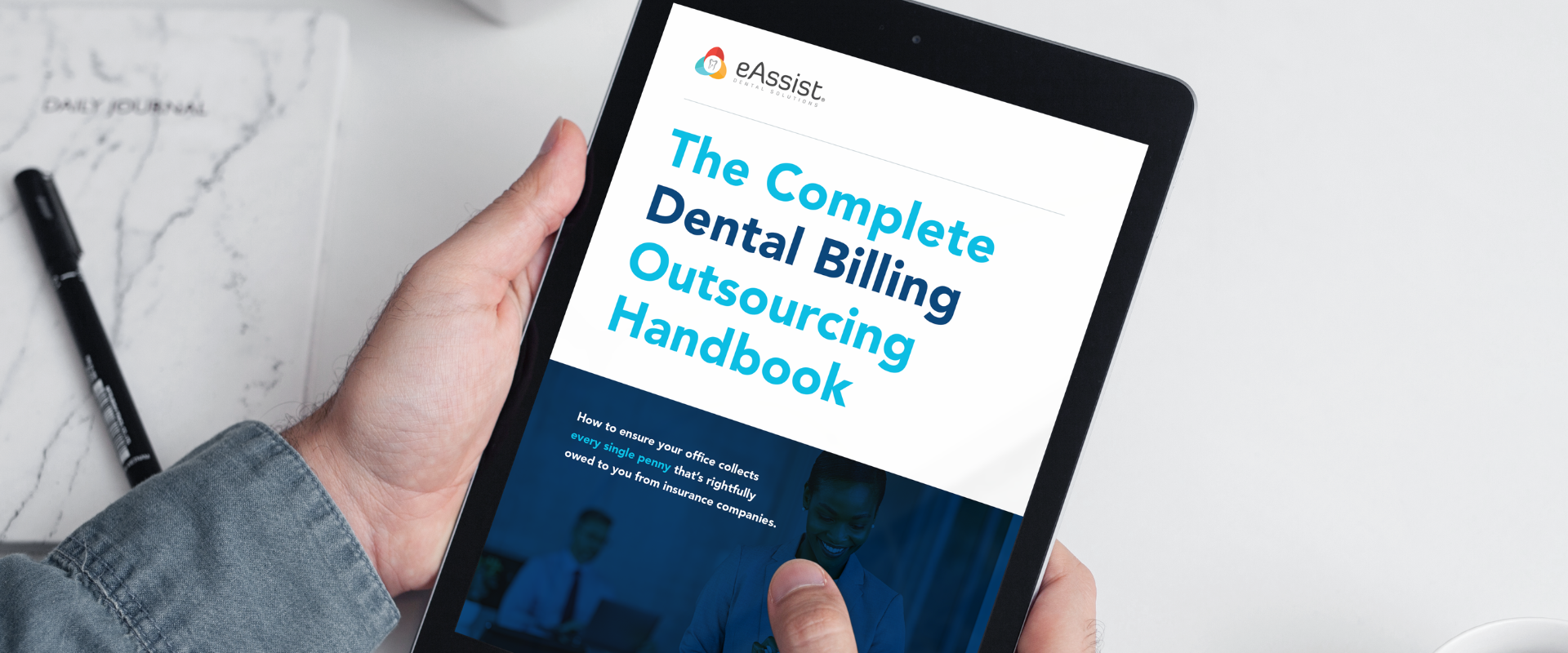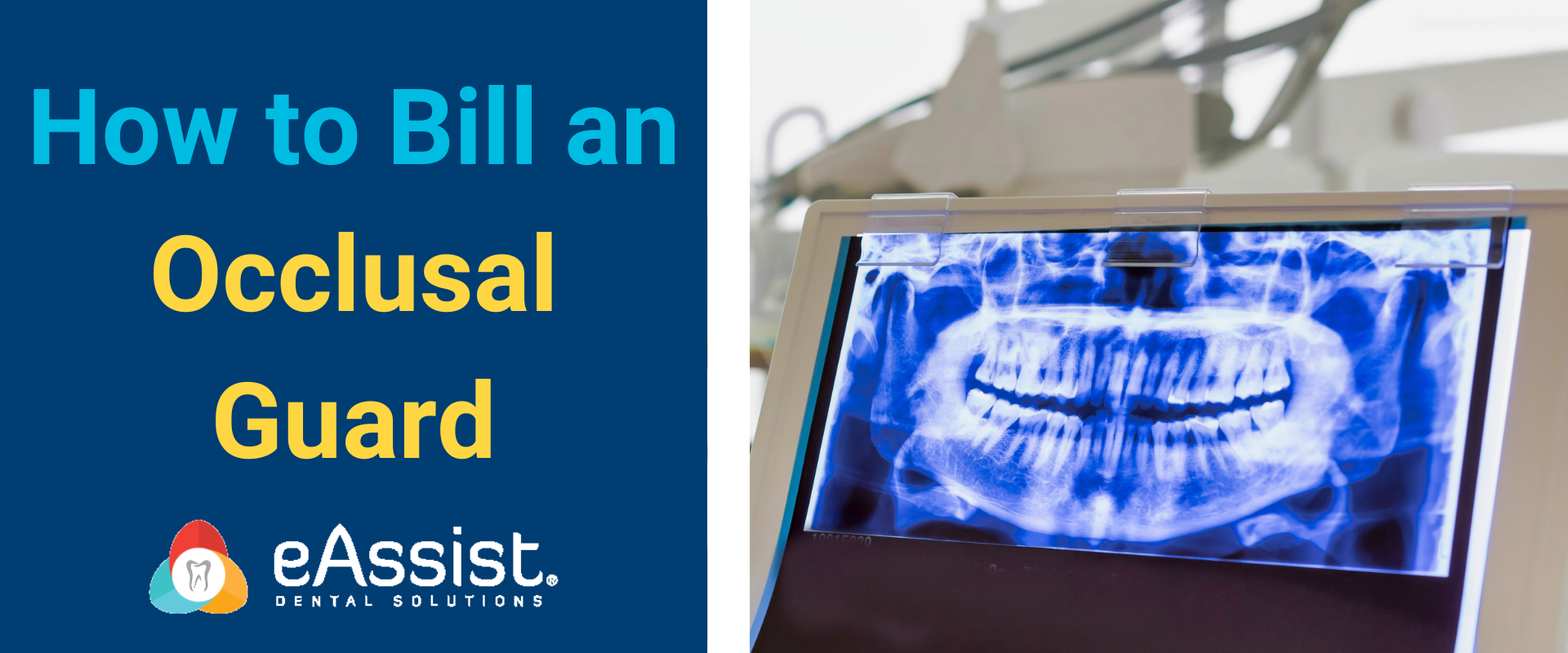The most successful dental practices understand that dental billing is a team sport. From the clinical team to the doctor to the dental administrator, every member plays a role in successfully collecting the money they are owed from insurance companies. Clinical notes, radiographs, periodontal charting, etc, etc. — all of this is vital to sending a clean claim for timely reimbursement. Since insurance billing is such a large factor in your practice’s cash flow, it is important to completely understand what this process entails. Luckily, that is exactly what you’ll learn in this post.
What is dental billing?
Dental billing refers to the process of submitting and following up on claims for payment for dental services provided to patients. This involves preparing and submitting claims to insurance companies, government programs, or patients themselves, and then following up on the status of those claims to ensure payment is received. Dental billing can involve complex coding and documentation requirements. It is important for dental practices to have a thorough understanding of insurance plans, government programs, and billing regulations to ensure accurate and timely payment for their services. The goal of dental billing is to maximize the practice’s revenue, while ensuring compliance with applicable laws and regulations.
Dental billing encompasses every aspect of sending the completed treatment to an insurance carrier for reimbursement per the patient’s insurance plan. This begins with ensuring the correct CDT codes are on the claim and ends with payment from the insurance carrier. But there are many steps in between, and if even one of those steps is missed that can result in payment from the insurance carrier being delayed.
Another critical dental billing process is verifying the claim information is correct. This includes everything from the subscriber information to the insurance information to the CDT codes. Claims denied due to incorrect or missing claim information are the epitome of superfluous insurance denials and unnecessary delays in payment.
Why is dental billing important?
With nearly 65% of dental practices participating with dental insurance — due to 50.2% of the adult population in the United States utilizing dental insurance — dental insurance billing is a crucial component in a dental practice’s revenue cycle management. Annually, the average dental practice loses 9% of collectible revenue to missed dental billing processes, which can add up quickly regardless of the size of the practice.
Dental billing is important for several reasons:
- Reimbursement: Dental insurance billing is necessary in order to receive reimbursement for the services provided to patients. Proper billing is crucial in order to receive payment for the full value of the services provided, which is essential for the financial stability and success of a dental practice.
- Compliance: Accurate and compliant insurance billing is important in order to avoid denied claims, audits, and legal action. Dental practices must understand and comply with the rules and regulations of the insurance companies they work with, as well as federal and state laws and regulations related to healthcare billing.
- Record Keeping: Dental billing is an important component of a practice’s record-keeping system. Accurate and complete records of billing and payment activities help practices monitor their financial performance and ensure that they receive payment for all services provided.
- Patient Satisfaction: Dental billing is also important for patient satisfaction. Patients want to know that their insurance coverage is being utilized to its fullest and that their out-of-pocket costs are being accurately calculated. Accurate and transparent billing helps to build trust between a practice and its patients.
In summary, dental insurance billing is important for ensuring reimbursement, compliance, proper record-keeping, and patient satisfaction.
This is why it is important to have specialists in your corner. eAssist Dental Solutions is the nation’s leading platform for dental insurance billing and has the largest network of billing specialists that know the dental insurance billing processes forwards, backward, and upside down. This means increased cash flow, more time for patient care, and no more revenue cycle management disruptions. Email LearnMore@eassist.me, call (844) 327-7478, or click here to schedule a free consultation.
Is dental billing hard?
Dental billing can be challenging. It involves a complex set of rules, codes, and regulations that must be followed in order to receive payment for services provided. Dental practices must have a thorough understanding of insurance plans, government programs, and billing regulations in order to ensure accurate and timely payment.
Additionally, insurance billing often requires significant attention to detail, as small errors in coding or documentation can result in denied claims or reduced reimbursement. This can require significant time and effort, especially for practices that handle a large volume of billing on a daily basis.
However, with the right tools and resources, dental insurance billing can be made easier. Many practices use specialized software to manage their billing processes, which can automate many of the routine tasks involved in billing and reduce the risk of errors. Furthermore, outsourcing dental billing can provide support and training to help practices navigate the complexities of the billing process.
In conclusion, while insurance billing can be challenging, it can also be manageable with the right resources and approach.
What’s the difference between medical billing and dental billing?
Medical billing and dental billing are similar in that they both involve the process of submitting and following up on claims for payment for healthcare services provided to patients. However, there are some key differences between medical and dental billing:
- Services covered: Medical billing covers a wide range of services, including inpatient and outpatient procedures, diagnostic tests, and prescription drugs. Dental billing, on the other hand, is limited to dental procedures, such as cleanings, fillings, extractions, and orthodontic work.
- Coding systems: Both medical and dental billing use codes to describe the services provided, but the coding systems used are different. Medical billing uses the International Classification of Diseases (ICD) codes, while dental billing uses the Current Dental Terminology (CDT) codes.
- Reimbursement: The reimbursement processes for medical and dental billing can be different, depending on the insurance company and the type of coverage a patient has. In general, medical insurance tends to have broader coverage and higher reimbursement levels compared to dental insurance.
- Regulations: Medical billing is subject to the regulations of the Affordable Care Act and other federal laws, while dental billing is subject to a different set of regulations.
In conclusion, while there are similarities between medical and dental billing, they are distinct processes that differ in terms of the services covered, coding systems used, reimbursement, claims processing, and regulations.
What do you do in dental billing?
The specific tasks involved in insurance billing can vary depending on the size and type of the dental practice, but some common activities include:
- Pre-authorization: Obtaining pre-authorization from insurance companies or government programs for certain procedures.
- Documentation: Accurately documenting the services provided, including patient information, diagnosis codes, and procedures performed.
- Coding: Assigning the appropriate codes to the services provided using the Current Dental Terminology (CDT) codes.
- Claims preparation: Preparing and submitting claims to insurance companies, government programs, or patients. This may involve entering claims into an electronic billing system, printing and mailing paper claims, or submitting claims through an online portal.
- Follow-up: Following up on the status of claims to ensure payment is received. This may involve checking for payment status in an electronic billing system, calling insurance companies or government programs to inquire about the status of a claim, or appealing denied claims.
- Payment posting: Recording payments received from insurance companies, government programs, or patients. This may involve updating an electronic billing system, recording payments in a ledger, or depositing checks.
- Accounts Receivable Management: Monitoring accounts receivable and pursuing payment from insurance companies, government programs, or patients as needed.
In summary, dental billing involves a range of tasks related to documenting and coding services, submitting claims, following up on the status of claims, posting payments, and managing accounts receivable. These tasks are essential for ensuring that a dental practice receives payment for the services provided.
What is dental coding?
Dental coding is the process of assigning codes to describe the services provided to patients in a dental practice. The codes used in dental coding are known as Current Dental Terminology (CDT) codes, which are maintained by the American Dental Association (ADA).
The purpose of dental coding is to provide a standardized and detailed description of the services provided, which is used by insurance companies, government programs, and other healthcare entities to determine reimbursement for the services. This helps to ensure that the correct amount of payment is received for the services provided and that the dental practice is in compliance with insurance requirements.
Dental coding requires a strong understanding of the CDT codes and the services they represent, as well as a thorough knowledge of the patient’s medical history and the services provided. Accurate and complete coding is essential in order to avoid denied claims, reduced reimbursement, and compliance issues.
In summary, dental coding is a critical component of the billing process in a dental practice, as it provides a standardized and detailed description of the services provided, which is used to determine reimbursement for those services.
What are some best practices for dental billing?
- Stay up-to-date on changes in regulations and insurance policies: The rules and regulations governing dental insurance billing are constantly changing. Consequently, it’s important to stay informed and updated on these changes. This can be achieved by attending continuing education courses, reading industry publications, or consulting with a specialist.
- Use specialized software or a billing service: Many dental practices use specialized software or a billing service to manage their billing processes, which can automate many routine tasks and reduce the risk of errors. This can also help to streamline the billing process and improve the accuracy of claims submissions.
- Maintain thorough and accurate records: Accurate and complete documentation is key to the success of dental billing. This includes keeping up-to-date patient information, documenting all services provided, and following up on the status of claims in a timely manner. Having a robust system for maintaining records can help to ensure that claims are processed smoothly and efficiently, reducing the risk of denied claims and other issues.
In summary, staying informed on changes in regulations and insurance policies, using specialized software or outsourcing dental billing, and maintaining thorough and accurate records are three key tips for mastering your billing process. By following these tips, dental practices can improve their billing efficiency and ensure that they receive the correct reimbursement for the services they provide.
eAssist can help
The eAssist Dental Solutions platform provides comprehensive insurance billing services to dental practices, helping dental practices like yours manage their billing and administrative tasks so you can focus on providing high-quality patient care. CLICK HERE to schedule a consultation with a Business Development Specialist today!













0 Comments